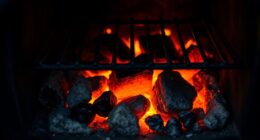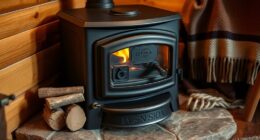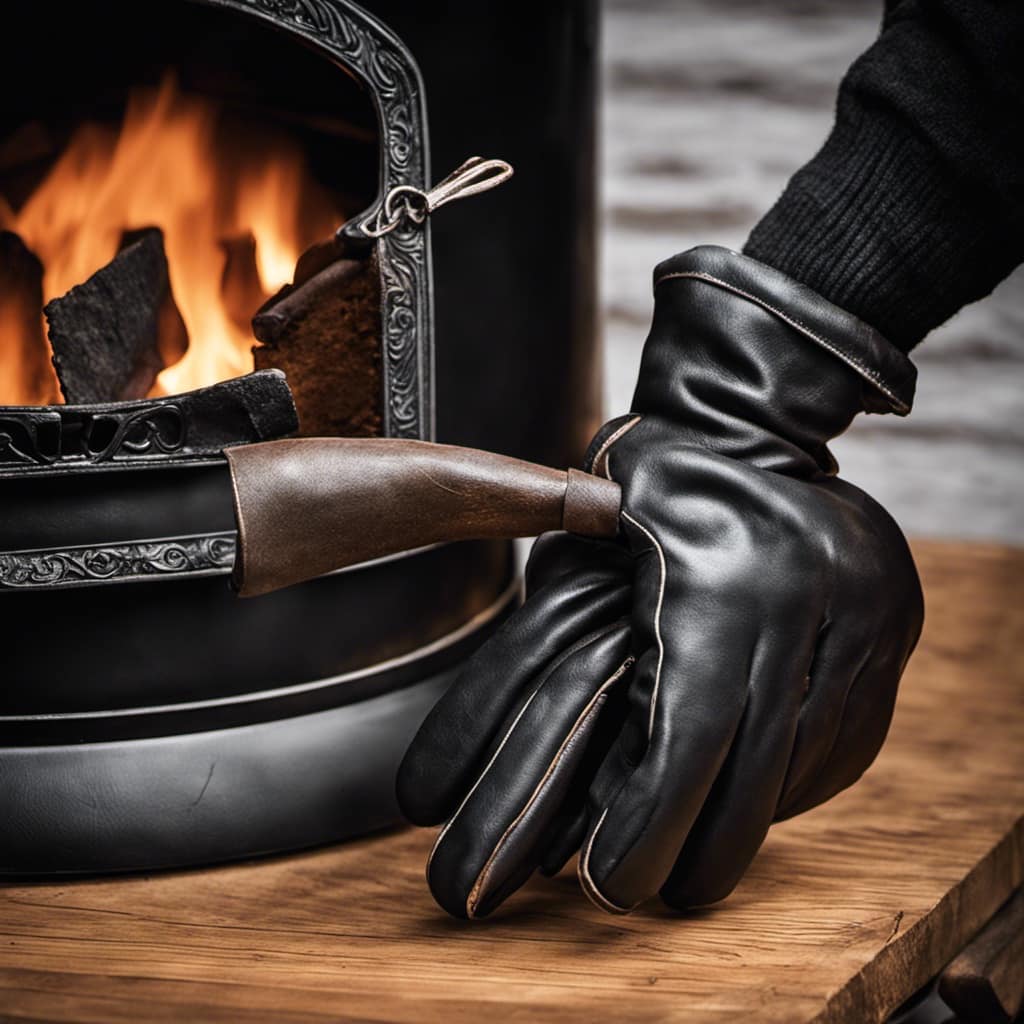
As a homeowner with a wood stove, I was surprised to see black soot on my ceilings. This prompted me to explore the causes of this problem further. After conducting thorough research and experiments, I found that various factors contribute to the formation of black soot. These factors include the efficiency of combustion, the moisture level in the wood, the type and quality of wood used, and the effectiveness of airflow and ventilation.
Join me as I unravel the mysteries behind this issue and explore the importance of regular maintenance and cleaning to prevent it.
Key Takeaways
- Incomplete combustion in wood stoves leads to the formation of black soot on ceilings.
- Factors like poor air intake, improper fuel-to-air ratio, and inadequate mixing contribute to incomplete combustion.
- High moisture content in wood leads to inefficient combustion and the production of carbon monoxide and soot.
- Using well-seasoned wood with low moisture content and proper insulation can minimize soot production and reduce black soot on ceilings.
The Role of Incomplete Combustion
I can’t ignore the role of incomplete combustion in causing black soot on ceilings from a wood stove. When wood is burned, it undergoes a chemical reaction known as combustion.
In an ideal scenario, complete combustion occurs, where the wood is fully oxidized and converted into carbon dioxide and water vapor. However, when combustion is incomplete, there’s insufficient oxygen available for the reaction to proceed fully.
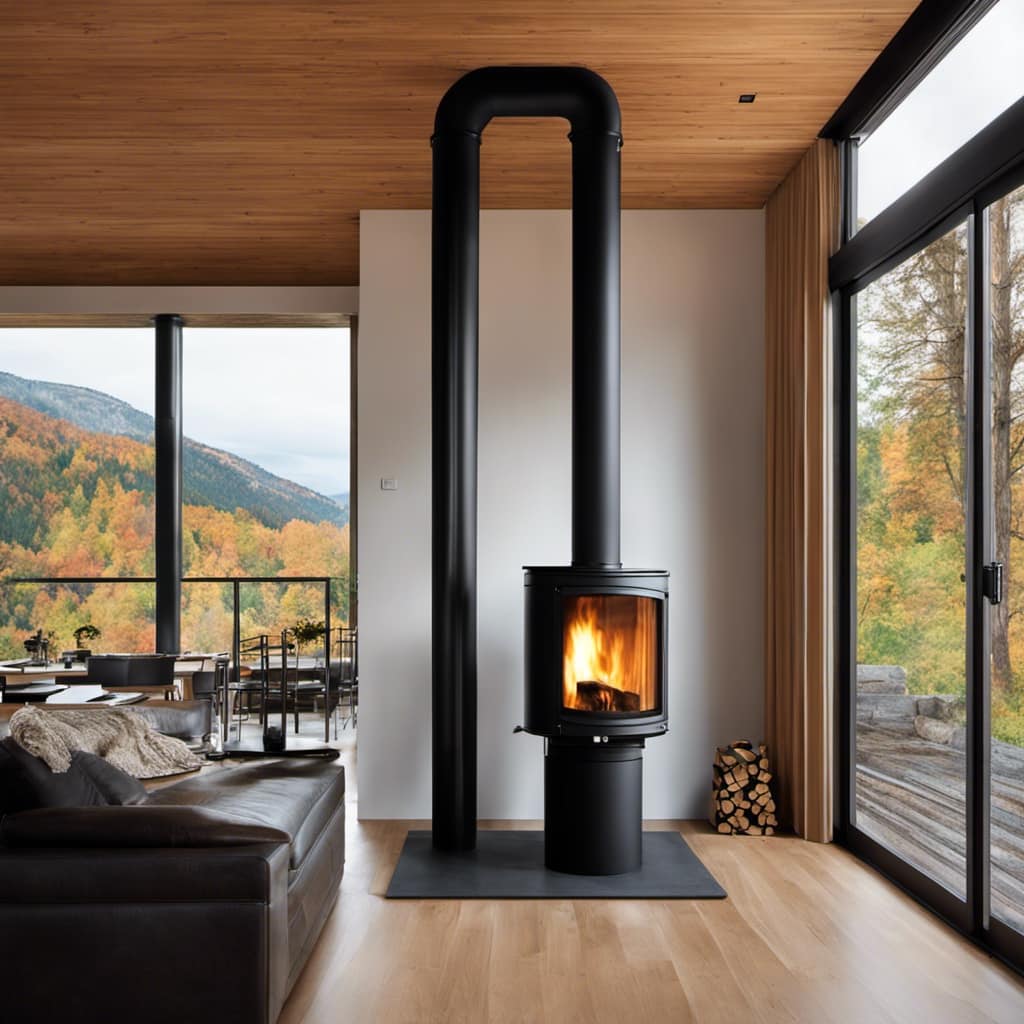
This leads to the formation of black soot, also known as carbon particulates. Inefficient combustion can be caused by factors such as poor air intake, improper fuel-to-air ratio, or insufficient mixing of fuel and air.
Not only does incomplete combustion result in the unsightly black soot on ceilings, but it also has negative environmental impacts. It releases harmful pollutants into the air, such as carbon monoxide and volatile organic compounds, contributing to air pollution and potential health risks.
Therefore, it’s crucial to ensure combustion efficiency in wood stoves to minimize the production of black soot and reduce the environmental impact.
Understanding the Impact of Moisture Content
Understanding the impact of moisture content is crucial in determining the efficiency of combustion in wood stoves. The condensation effects and humidity influence play significant roles in the combustion process. When wood with high moisture content is burned, the heat energy is used to evaporate the water instead of being utilized for combustion. This results in lower temperatures and incomplete combustion, leading to the production of pollutants such as carbon monoxide and soot.
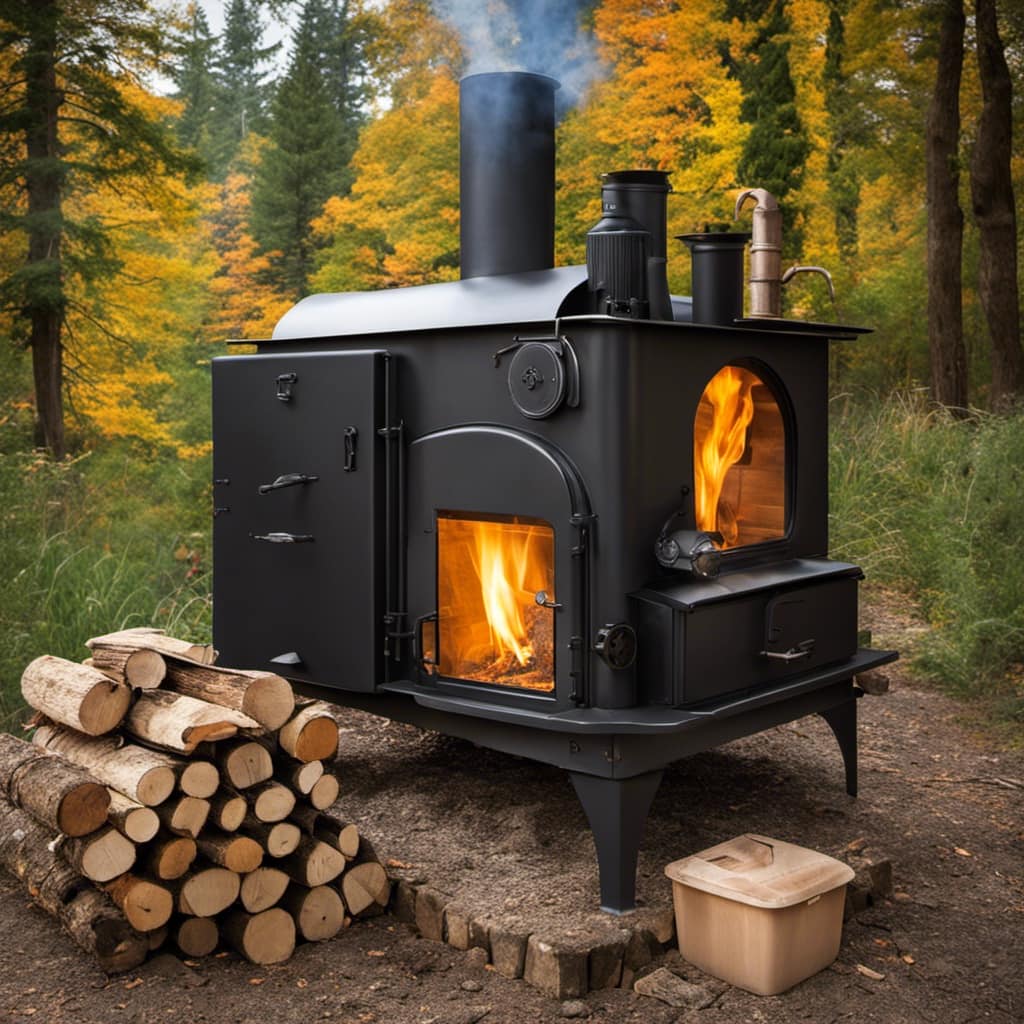
Additionally, the presence of moisture can cause condensation in the flue, which further hampers the efficiency of the stove. Therefore, it’s essential to ensure that the wood used in wood stoves has a moisture content of around 20% or less to achieve efficient and clean combustion.
Transitioning to the significance of wood type and quality, we must consider their influence on combustion efficiency.
The Significance of Wood Type and Quality
Having a high-quality wood type is essential, as it can greatly impact the efficiency of combustion in wood stoves. Wood species selection plays a crucial role in determining the combustion efficiency and overall performance of a wood stove.
Different wood species have varying densities, moisture content, and chemical compositions, which directly affect the combustion process. For optimal combustion efficiency, it’s important to choose a wood species that has a high energy content and low moisture content.
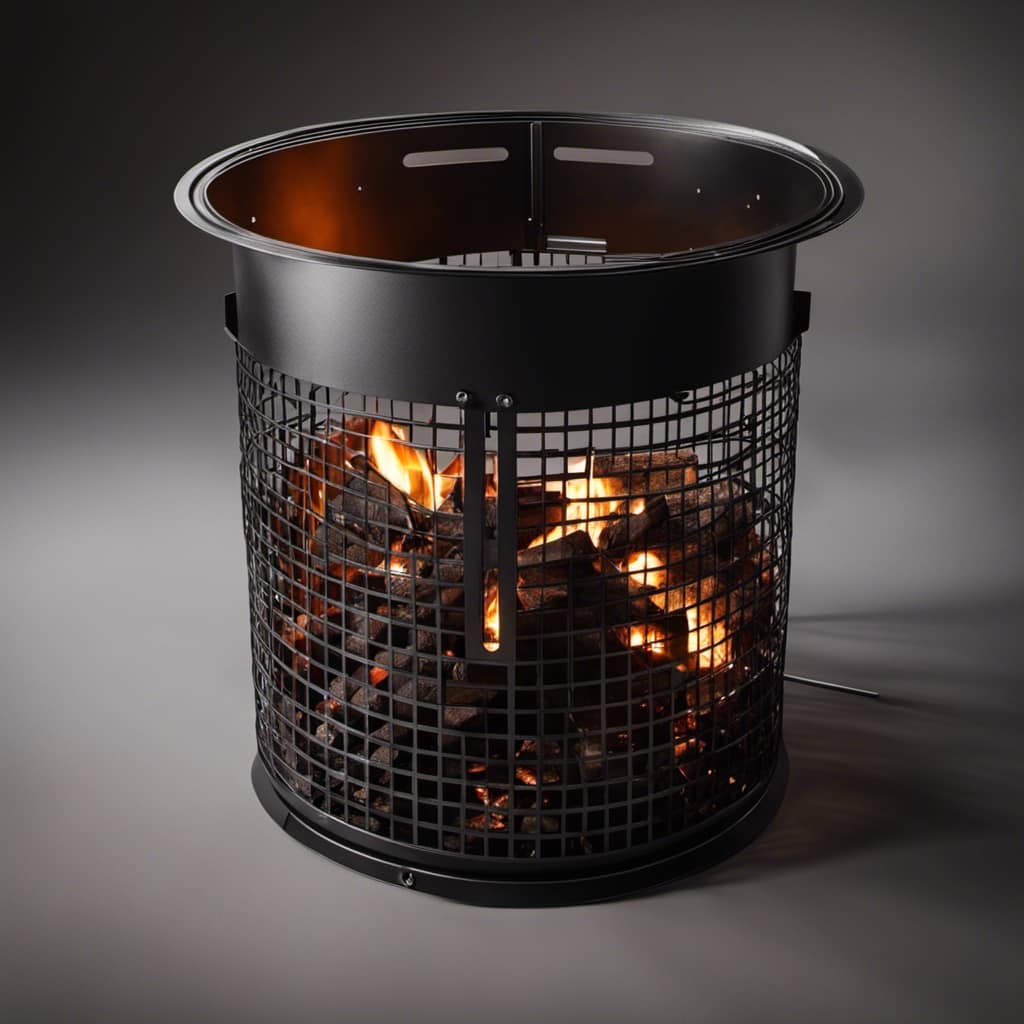
Hardwoods such as oak, maple, and birch are excellent choices as they’ve a higher energy content and burn longer compared to softwoods like pine or fir. Additionally, using well-seasoned wood with a moisture content below 20% ensures efficient combustion and minimizes the production of harmful byproducts such as soot and creosote.
Proper wood species selection and moisture content management are essential for achieving optimal combustion efficiency in wood stoves.
How Airflow and Ventilation Contribute to Soot Formation
The airflow and ventilation in a wood stove play a significant role in the formation of black soot on ceilings. Proper insulation ensures efficient combustion, which in turn reduces the production of soot. Insulation plays a crucial role in reducing heat loss and maintaining a consistent temperature inside the wood stove. On the other hand, poor insulation can lead to incomplete combustion and the formation of more soot.
Additionally, the effect of chimney height on soot dispersal shouldn’t be underestimated. A taller chimney allows for better draft and improved airflow, which helps carry the soot particles up and away from the stove, preventing them from settling on the ceilings.

Therefore, proper insulation and chimney height are key factors in minimizing the formation and accumulation of black soot on ceilings.
The Importance of Regular Maintenance and Cleaning
I make sure to prioritize regular maintenance and cleaning of my wood stove to prevent the build-up of black soot on my ceilings. Effective cleaning techniques play a crucial role in keeping the stove and chimney free from soot deposits.
Firstly, I always ensure to remove the ashes and debris from the stove, as this will help in maintaining proper airflow.
Secondly, I use a chimney brush to clean the flue regularly, as it helps to remove any creosote or soot buildup.
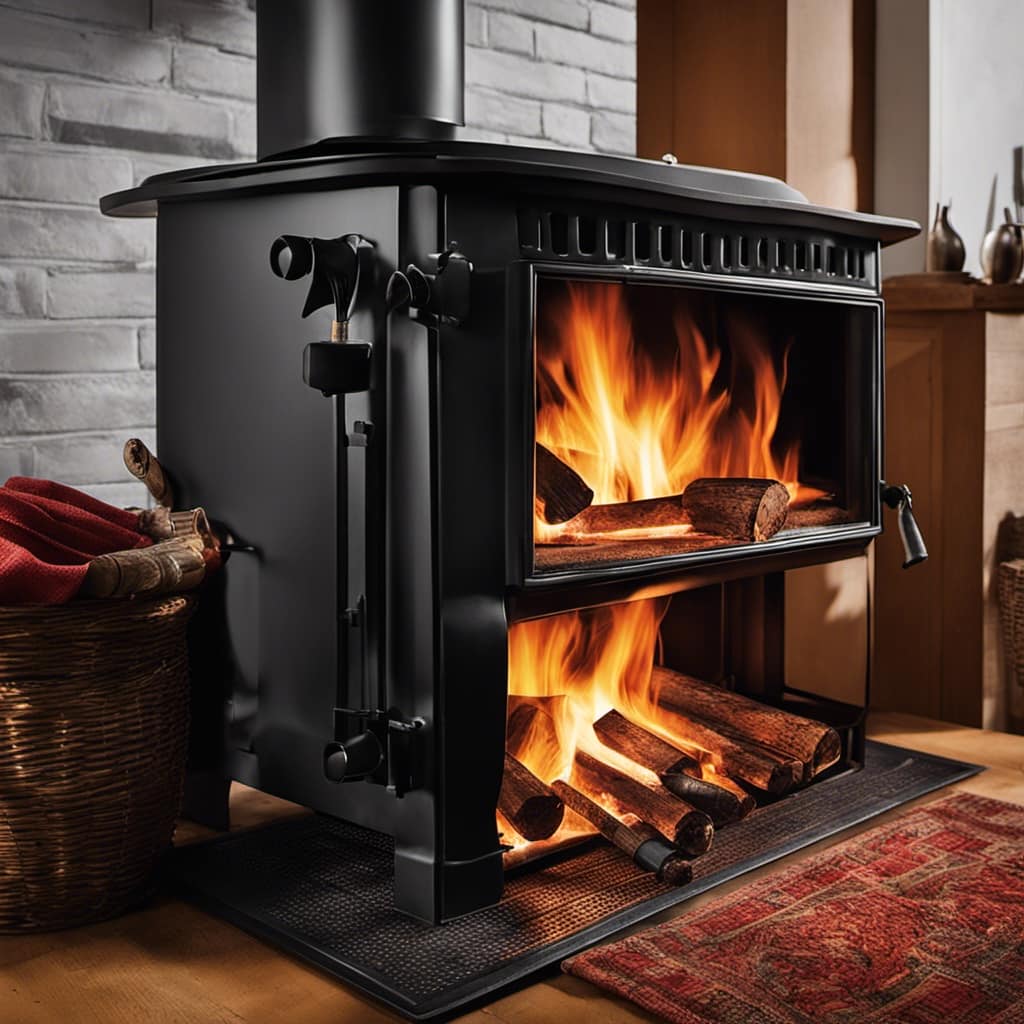
Additionally, preventive measures against soot buildup include burning dry and seasoned wood, as wet or unseasoned wood tends to produce more soot.
Also, I keep an eye on the stove’s air vents and make sure they’re clean and unobstructed for optimal combustion.
Regular maintenance and effective cleaning techniques are essential for keeping my wood stove clean and preventing the accumulation of black soot on my ceilings.
Frequently Asked Questions
How Can I Prevent Black Soot From Forming on My Ceilings?
To prevent black soot on ceilings, I recommend taking preventive measures like using properly seasoned firewood, maintaining adequate airflow, and ensuring a clean flue. Regular cleaning techniques such as dusting and wiping the ceiling can also help.
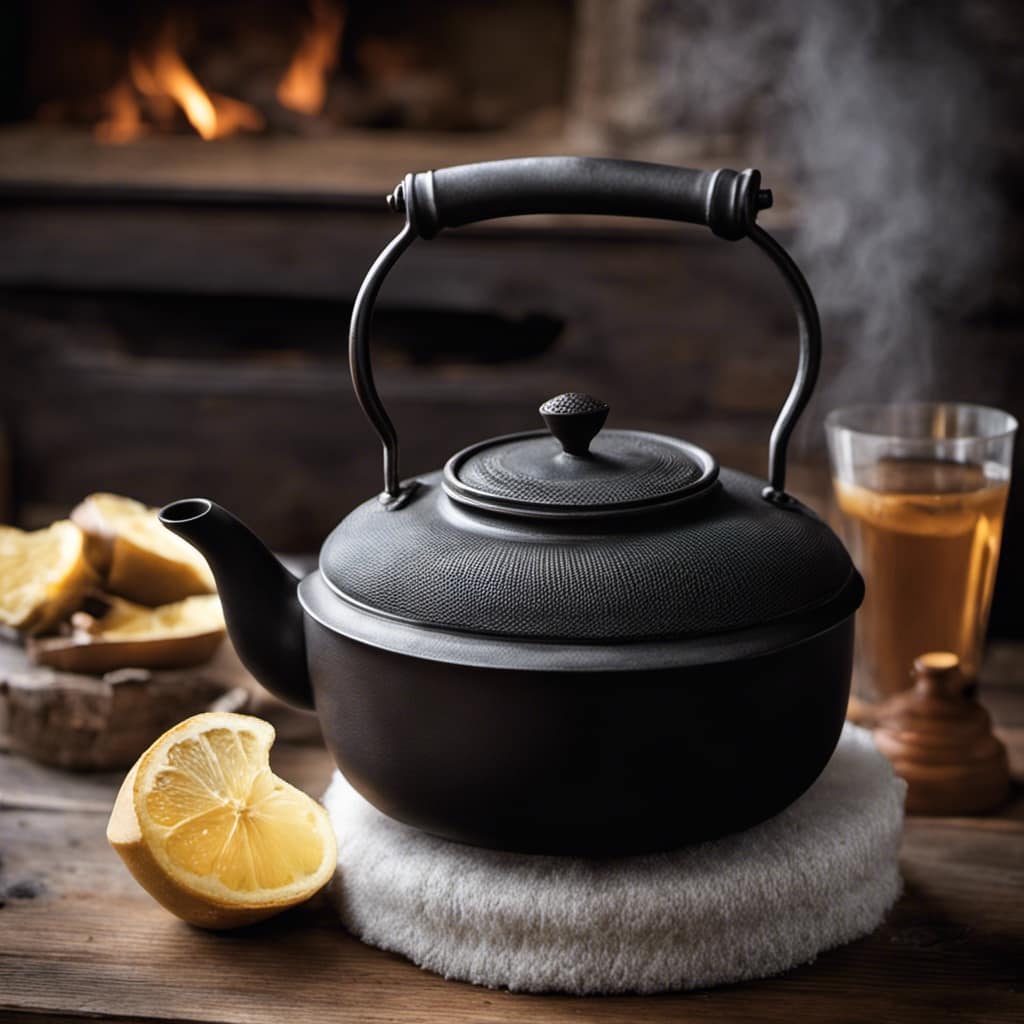
What Are the Potential Health Risks Associated With Black Soot From a Wood Stove?
Potential health risks associated with black soot from a wood stove include respiratory issues, eye irritation, and increased risk of cardiovascular problems. Regular cleaning methods, such as using a damp cloth or vacuuming, can help reduce these risks.
Can the Type of Wood I Burn in My Wood Stove Affect the Amount of Black Soot Produced?
The type of wood I burn in my wood stove can affect the amount of black soot produced. The moisture content of the wood and the temperature of the stove both play a role in black soot formation.
Are There Any Specific Cleaning Methods or Products That Work Best for Removing Black Soot From Ceilings?
Cleaning methods and effective products are essential for removing black soot from ceilings. I can provide detailed knowledge and recommendations on the best approaches, ensuring effective removal and preventing future buildup.
Is There a Way to Reduce or Eliminate Black Soot Formation Without Compromising the Efficiency of My Wood Stove?
Reducing black soot formation while maintaining wood stove efficiency is possible. Regularly cleaning the stovepipe and chimney, using dry seasoned wood, and adjusting the air intake can help minimize soot buildup.
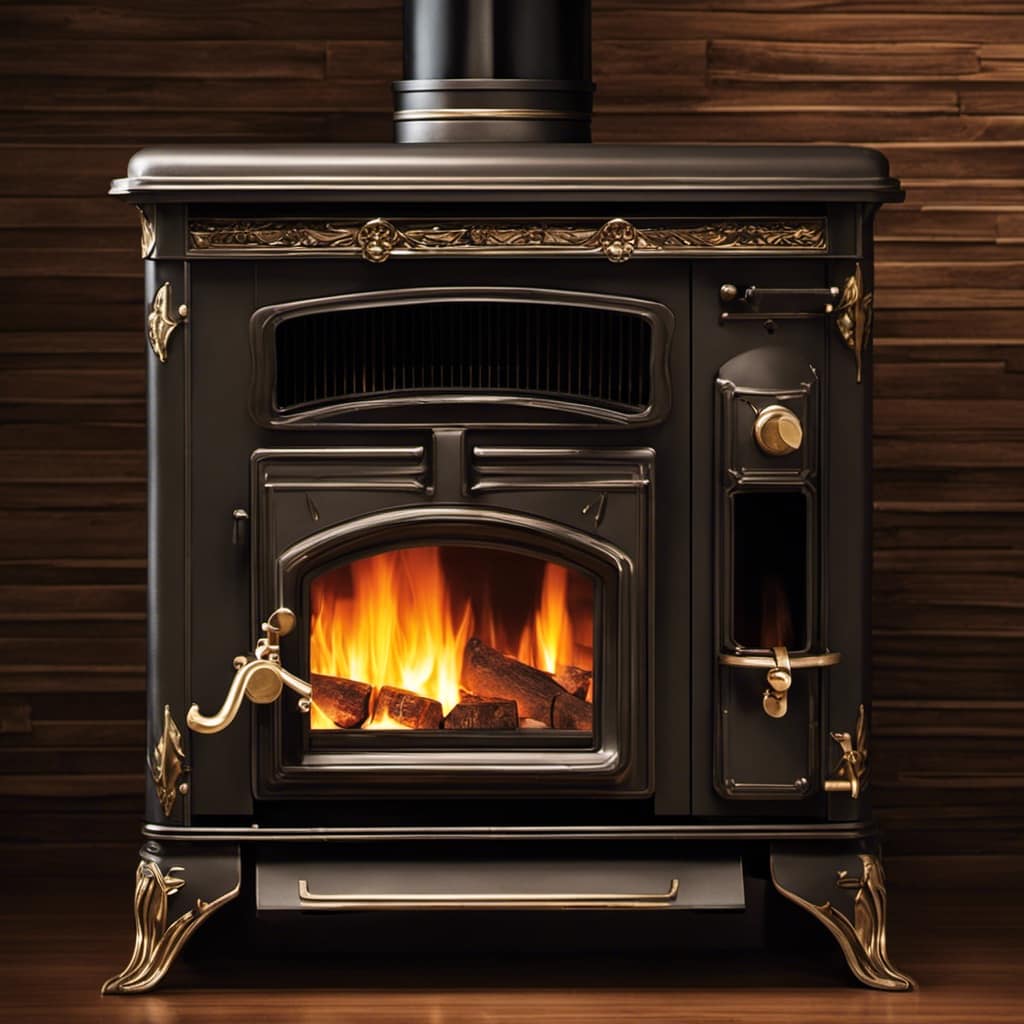
Conclusion
In conclusion, the black soot on ceilings from wood stoves is caused by a combination of factors. Incomplete combustion, high moisture content in the wood, and poor wood quality all contribute to the formation of soot. Additionally, inadequate airflow and ventilation can further exacerbate the problem.
To prevent the accumulation of soot, regular maintenance and cleaning of the wood stove are essential. By addressing these factors, you can ensure a clean and efficient wood stove that will keep your home warm and cozy.
Growing up surrounded by the vast beauty of nature, Sierra was always drawn to the call of the wild. While others sought the comfort of the familiar, she ventured out, embracing the unpredictable and finding stories in the heartbeat of nature.
At the epicenter of every remarkable venture lies a dynamic team—a fusion of diverse talents, visions, and passions. The essence of Best Small Wood Stoves is crafted and refined by such a trio: Sierra, Logan, and Terra. Their collective expertise has transformed the platform into a leading authority on small wood stoves, radiating warmth and knowledge in equal measure.









